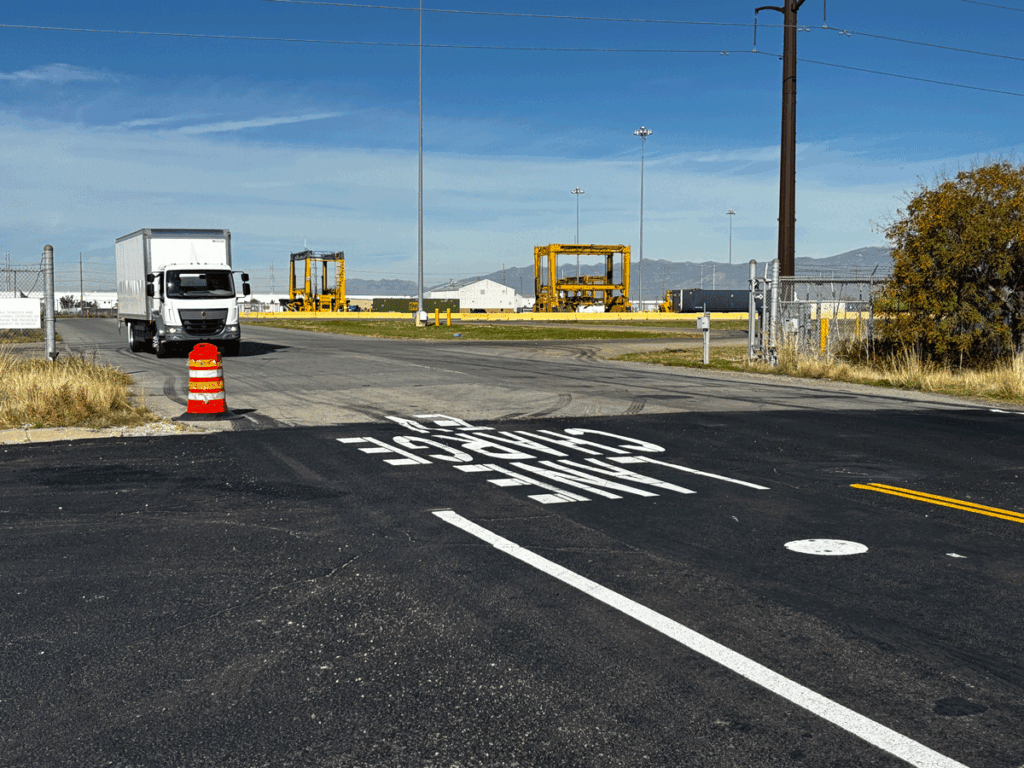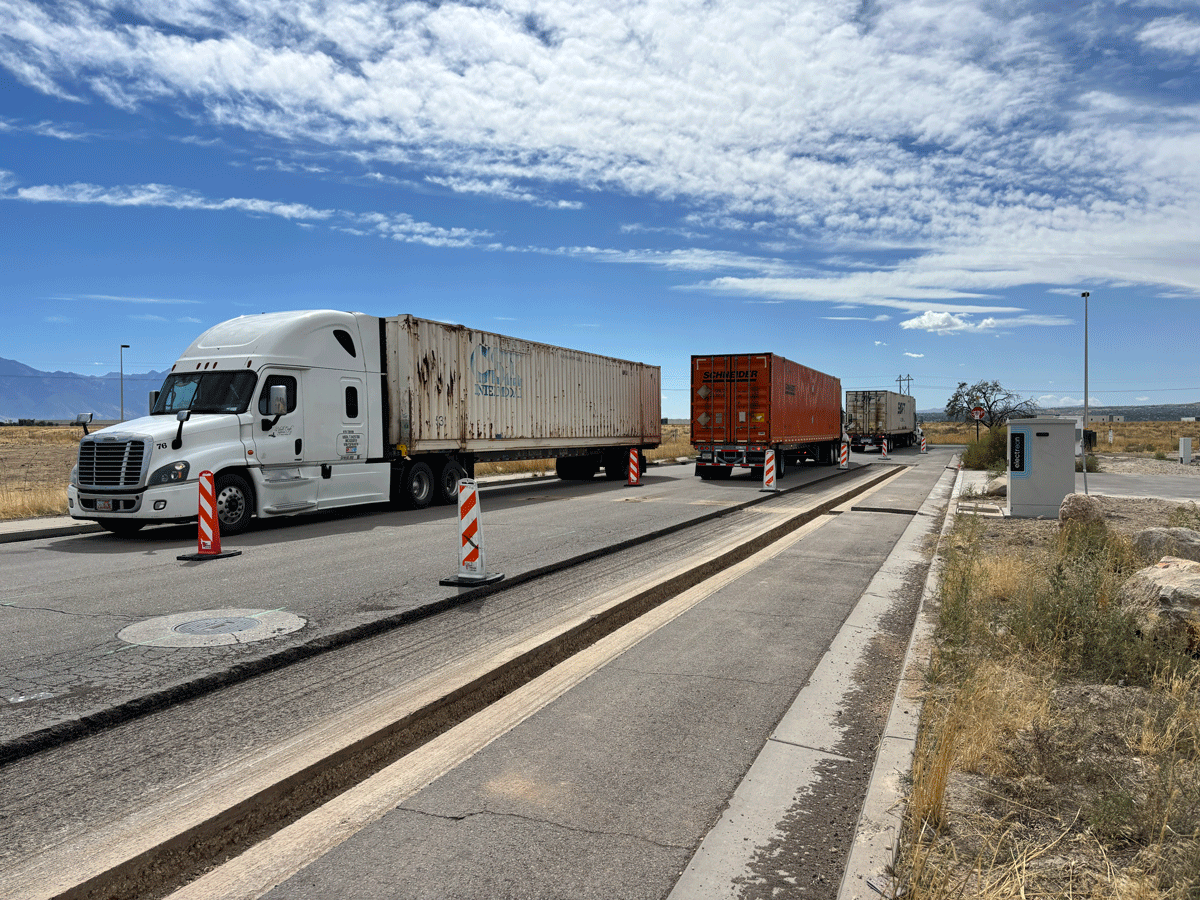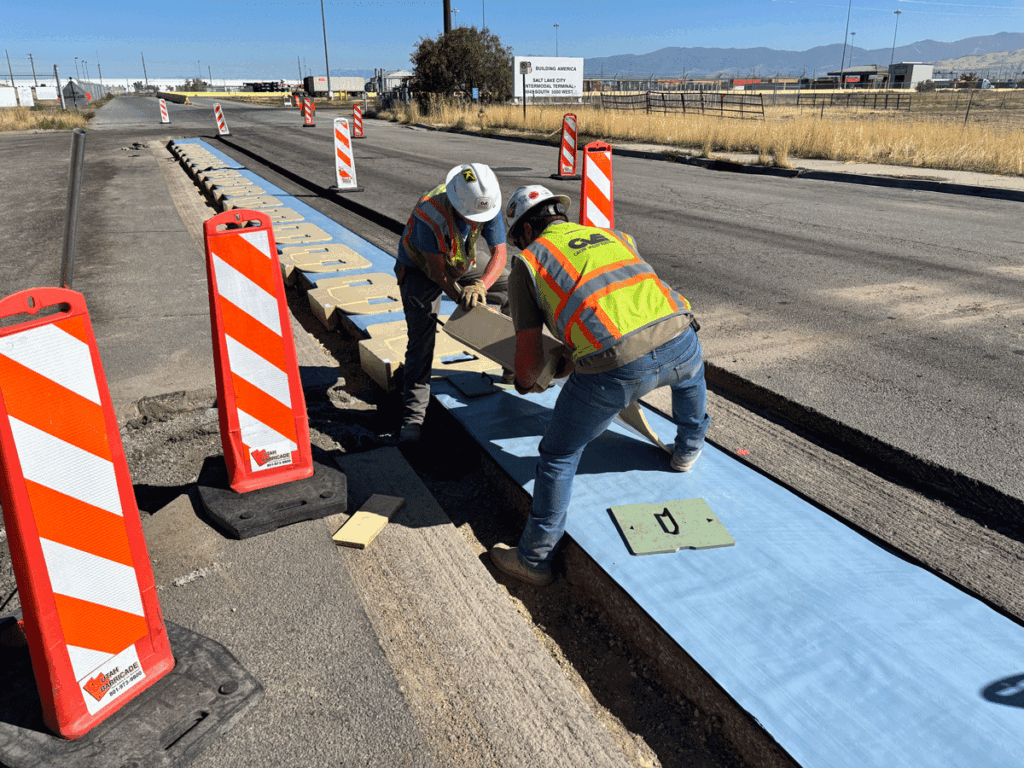Forging the Electrification Frontier: Pioneering the DWPT Permitting Process

After years of hard work, collaboration, and education, ASPIRE has worked with Salt Lake City policymakers to create the first-of-their-kind permits to install a dynamic wireless power transfer (DWPT) system at the Utah Inland Port in Salt Lake City (SLC). This long and arduous process — as city officials were navigating new ground — was an enlightening experience and highlighted ways to help DWPT systems become more viable.
“Going through this city process is a significant reason we did this project,” said Tyler Munk, ASPIRE’s senior project coordinator. “It took a long time, but it also served many purposes because we are ‘forging the frontier’ and establishing a pathway for future installs. The first one will always be the most difficult because there were no previous projects to lean on as evidence of success. This is that initial step, and we believe that each subsequent project can go through the permit process smoother and quicker as a result of this project.”
Unlike other projects for common utilities that have practices and established codes for their installation, the DWPT is the first-of-its-kind infrastructure to be built in Salt Lake City.

“Because this is an emerging technology, there are no construction and design standards specific to DWPT systems currently within City codes,’” Munk said. “This can make it difficult for city reviewers because official standards are not available for reference.”
This meant a larger lift and longer lead times as ASPIRE had to coordinated with a variety of different city officials to procure approval at each of the stages, even with the strong initial support for the project, according to ASPIRE Program Director Dustin Maughan.
“We started the process three years ago, and everyone was completely on board and supportive,” Maughan said. “The mayor was very supportive, leadership was very supportive, but that still needed to be communicated to each of the other stages.”
The tenacity and dedication that ASPIRE exerted did not go unnoticed.
“Despite project hurdles along the way to meet municipal permitting, code, and ordinance requirements, ASPIRE remained resolute in making the project a reality,” said City Engineer Mark Stephens. “Salt Lake City looks forward to hearing about the lessons learned and research advancements resulting from ASPIRE’s Electreon Charging Project.”


By paving the pathway and building a knowledge base for future DWPT installations, ASPIRE was also able to highlight different opportunities for growth and improvement along the permit approval process. And these efforts are in line with ASPIRE’s designation as the state’s leading entity to build out the Utah Electrified Transportation Plan, where ASPIRE is both coordinating with agencies to align efforts while piloting the technology to highlight its use cases.
“Right now, permit processes aren’t geared to support this infrastructure, so there are delays,” Maughan said. “This experience is informing what we can share with policy makers and city officials on how to improve the procedures for these permitting processes.”
Through continued collaboration with policy makers and city officials to help streamline the process, ASPIRE wants to make it easier for future DWPT installments to receive approval.
“Our hope is that now that the City review process has been completed and the correct legal documentation has been created, it can serve as a starting point for other projects that utilize similar technologies,” Munk said. “It has paved the way so future WPT projects will not have to start from scratch.”

Stephens agreed, stating that this process has “established sound processes to support similar research and development efforts,” and he looks forward to future developments.
“While many utilize wireless charging for their electronic devices as just an everyday convenience, ASPIRE’s technology and research efforts to wirelessly charge large transport vehicles in-transit that are capable of towing fully-loaded trailers is nothing short of mind blowing,” he said. “Scaling this type of wireless charging technology to accommodate in-lane, in transit charging of heavy-duty electrified vehicles is another step towards revolutionizing the trucking industry with the added benefit of reduced emissions from the typical diesel-powered vehicles emitting far more carbon emissions.”
Currently, the technology is undergoing testing to help inform international standards for DWPT charging lanes. For more information about the permitting process and DWPT charging, please reach out to Dustin Maughan.
About ASPIRE & Utah Electrification:
Headquartered at Utah State University, ASPIRE is a National Science Foundation Engineering Research Center. ASPIRE has demonstrated expertise in developing, implementing, and managing a range of electric vehicle (EV) infrastructure projects and fostering strong partnerships across the EV charging ecosystem. The center integrates multidisciplinary expertise across electrical, civil, and mechanical engineering, as well as economics, social sciences, and policy. In 2023, ASPIRE was designated the lead institution in building Utah’s Intelligent Electrified Transportation Plan. More information on the center can be found at aspire.usu.edu, and more on Utah’s electrification efforts can be found at utahelectrification.com.
Contacts:
Dustin Maughan
Program Director
ASPIRE ERC
Writer:
Kayleigh Kearsley
Marketing & Communications Intern
ASPIRE ERC